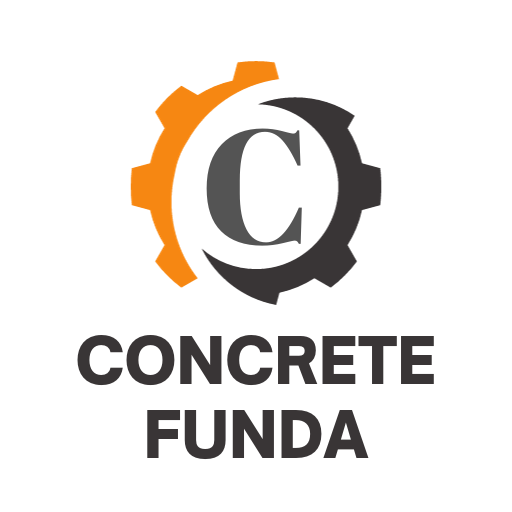Concrete polishing is a nuanced craft that demands attention to detail and a keen understanding of the materials you're working with. Ensuring customer satisfaction and maximizing your profits hinges on a few key considerations. In addition to the provided tips, we'll introduce some more valuable insights to help you achieve impeccable concrete polishing results.
1) Thoroughly Assess the Slab Before Commencing:
Before diving into concrete polishing, it's imperative to assess the condition of the slab you'll be working on. Recognize that every slab comes with unique characteristics, and failing to comprehend these can lead to unsatisfied clients and additional work. Taking the time to understand the slab's composition, potential imperfections, and moisture levels will enable you to deliver precisely what your clients expect.
Additional Tip: When inspecting the slab, also consider its exposure to different environmental conditions, such as sunlight and humidity, as these factors can affect the concrete's behavior during the polishing process.
2) Select the Right Diamond Tooling:
Choosing the appropriate diamond tooling is paramount for a successful concrete polishing job. Opt for high-quality metal bonds, resins, and chemicals tailored to your specific project. In doing so, you'll not only achieve superior results but also save money by avoiding poor tooling choices that can lead to inefficiencies and additional expenses.
Additional Tip: Regularly maintain and replace your diamond tooling as needed to ensure consistent performance and prolong their lifespan.
3) Find the Optimal Grinding Speed:
The speed at which you operate your grinder plays a pivotal role in effective concrete polishing. Faster isn't always better; instead, focus on discovering the optimal speed for your grinder. Running the grinder too quickly can reduce torque and hinder its ability to grind or polish effectively. This can result in the need for additional passes and increased labor.
Additional Tip: Experiment with different speeds on a small, inconspicuous area of the slab to determine the best setting for your specific project.
4) Dry or Wet Polishing: The Choice Matters:
While both dry and wet polishing methods have their merits, dry polishing offers distinct advantages in many situations. When you polish dry, you can easily inspect the scratch pattern, ensuring a more accurate assessment of your progress. This is akin to spraying water on a surface, which may look flawless when wet but reveals imperfections once dry.
Additional Tip: Consider environmental factors and the concrete's condition when deciding whether to use water in your polishing process. In certain cases, such as high heat or with specific materials, wet polishing might be the more appropriate choice.
5) Scrutinize Your Scratch Pattern:
Concrete polishing involves multiple stages, much like sanding wood. Each finer grit should remove the scratches left by the previous step. To achieve a flawless polish, it's imperative to maintain an even scratch pattern throughout the process. If your scratch pattern appears uneven, you may need to revisit the entire area to ensure a consistent finish.
Additional Tip: Regularly check the scratch pattern as you progress through different grits to catch and correct any irregularities early, saving time and effort in the long run.
In conclusion, mastering the art of concrete polishing demands attention to detail, the right tools, and a solid understanding of the materials involved. By following these enhanced tips in addition to the provided ones, you'll be well-equipped to deliver exceptional results that meet or exceed your clients' expectations while optimizing your profitability.
FAQs - Concrete Polishing: Essential Tips for Success
-
Why is inspecting the slab before starting the concrete polishing process crucial?
Ans. A thorough inspection helps tailor your approach to the specific slab's needs, ensuring a satisfactory final result. -
How do I choose the right diamond tooling for concrete polishing?
Ans. Selecting the right metal bonds, resins, and chemicals is essential; it's about matching the tooling to your project's requirements for efficiency and cost-effectiveness. -
What's the significance of finding the optimal grinding speed for the grinder?
Ans. The right speed ensures effective grinding or polishing without unnecessary wear and tear, saving you time and resources. -
Why is dry polishing often recommended over wet polishing?
Ans. Dry polishing allows for better scratch pattern inspection, revealing imperfections more clearly and resulting in a superior finish. -
How can I ensure my scratch pattern remains even throughout the polishing process?
Ans. Regularly scrutinize and correct the scratch pattern at each stage to achieve a flawless and consistent final result. -
Can these concrete polishing tips benefit both newcomers and experienced professionals?
Ans. Absolutely! These tips are valuable for beginners looking to build their expertise and for seasoned pros seeking to optimize their techniques. -
Are there specific environmental factors to consider when choosing between wet and dry polishing?
Ans. Yes, factors like temperature and material type may influence the decision between wet and dry polishing for a particular project. -
Is there a way to extend the lifespan of diamond tooling for concrete polishing?
Ans. Yes, proper maintenance and timely replacement of worn-out tooling can significantly prolong their effectiveness and longevity. -
How can I stay up-to-date with the latest advancements in concrete polishing techniques and tools?
Ans. Networking within the industry, attending workshops, and following industry publications can help you stay informed and adapt to innovations. -
What's the ultimate goal of mastering concrete polishing?
Ans. Mastering concrete polishing is about delivering exceptional results, meeting or exceeding client expectations, and maximizing profitability while elevating your craft.







